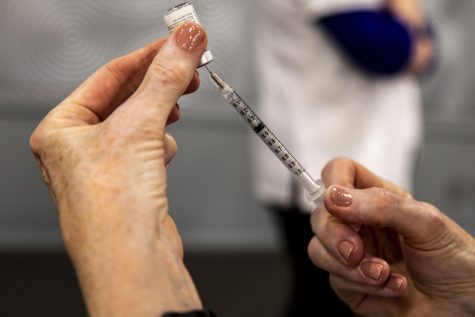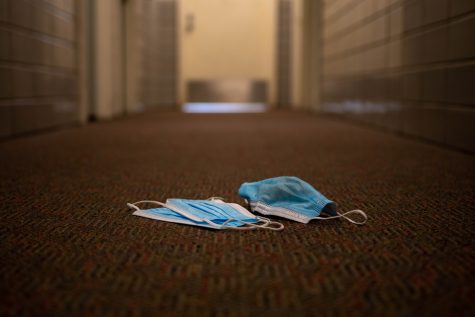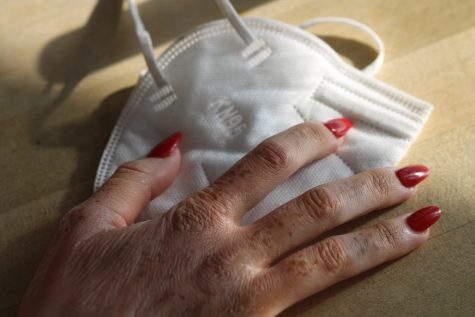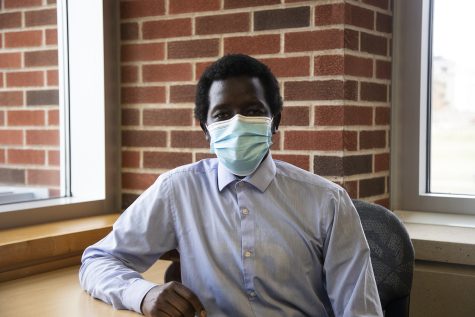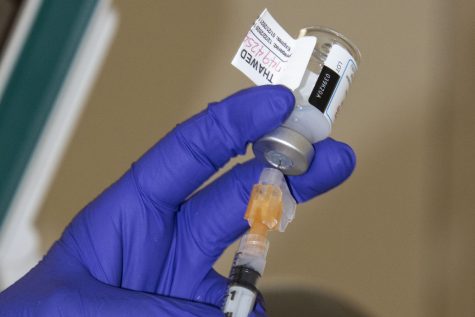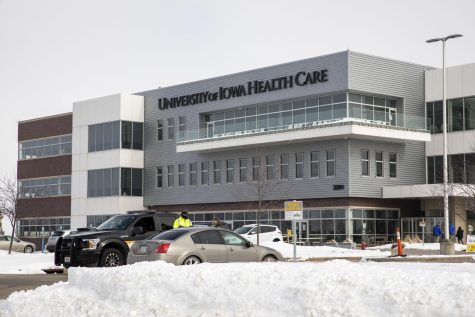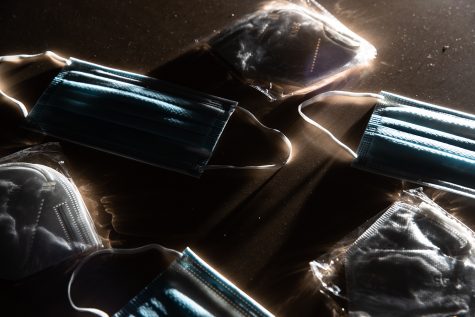Gov. Kim Reynolds reiterates need for new mitigations, gives updates on treatment, prisons cases
Reynolds explained new restrictions and gave updates on COVID-19 cases in prisons and treatment.
Gov. Kim Reynolds speaks during the Condition of the State address at the Iowa State Capitol on Jan. 14.
November 17, 2020
Gov. Kim Reynolds reiterated the need for new mitigations and stressed what is at stake as Iowa’s hospitalization rates of COVID-19 are on the rise in a press conference on Tuesday.
The new mitigations
On Monday evening, Reynolds announced new restrictions, which went in place at midnight on Tuesday Nov. 17. The new mandates include closing bars and restaurants at 10 p.m. and requiring masks inside public spaces when social distancing isn’t possible for 15 minutes or more.
Indoor events including weddings, funerals, receptions, and family gatherings are limited to 15 people, and outdoor events are limited to 30. This does not apply to gatherings in the workplace or government operations. Reynolds also prohibited youth and adult sports and recreations, but allowed high school, collegiate and professional sports to continue.
“The measures are targeted toward activities and environments where they have the potential to make a significant impact in a relatively short amount of time,” Reynolds said. “And they’re necessary if we want to do everything we can to keep our businesses open, our kids in school, our healthcare system stable.”
These mandates are in place through Dec. 10. Reynolds said the mitigations will be reassessed in a week and additional mitigations could be added based on hospital capacity and the COVID-19 trends.
Schools are not included in this mask mandate. On Tuesday Reynolds said she is not seeing spread between students in classrooms, but that schools can choose to implement mask mandates based on the amount of COVID-19 cases in their community.
Since Nov. 1 the Iowa Department of Public Education has received 53 requests to move to remote learning from school districts and nonpublic schools.
RELATED: Gov. Kim Reynolds announces stronger mask requirements nine months into pandemic
COVID-19 in prisons
Reynolds provided an update on COVID-19 cases at three correctional facilities and thanked Iowa Corrections System Director Beth Skinner and her team for coordinating mass tests.
Anamosa State Penitentiary detected the first cases of COVID-19 in the inmate population on Oct. 28, Reynolds said. By Nov. 4 there were nearly 500 positive results from 982 tests of inmates and staff. On Nov. 10 there was follow up testing of people who initially tested negative, which yielded nearly 250 more positive cases. Of the 742 total positive cases, Reynolds reported 64 percent were recovered. Another round of follow up testing is happening today.
In the Clarinda Correctional Facility there have been two outbreaks, one in September and one in late October, resulting in 547 total positive cases, 79 percent of which have recovered.
On Nov. 2 North Central Correctional Facility identified its first case of COVID-19. There are 370 total cases, and 18 percent have recovered at this time.
Treatments
“Despite the rising number of cases and hospitalizations there is hope that a vaccine is coming sooner rather than later and that new therapeutics can offer a fast and full recovery for more people,” Reynolds said. “In the last week we’ve heard good news about two promising vaccines that are proven to be more than 90% effective in early trials. Drugmakers Pfizer and Moderna plan to apply within the next few weeks for FDA emergency authorization to begin vaccinating the public.”
She said Iowa will be receiving more than 2000 doses of the new monoclonal antibody therapy to treat COVID-19 in adults with certain medical conditions, adults over 65, or immunocompromised children over the age of 12.
Reynolds said convalescent plasma is another treatment that has been used to treat COVID-19, and it has yielded positive results for patients. She said convalescent plasma is “currently in short supply, but easy to replenish with the help of Iowans who have had the virus.”
“Convalescent plasma has been one of the leading treatments for patients suffering from COVID-19. What we’re seeing right now though, is as the patient demand is skyrocketing, so is the need for convalescent plasma,” said Christine Hayes, chief operating officer of LifeServe Blood Center. “… Right now we are anticipating at the current rate of transfusions across the state of Iowa, that our supply of convalescent plasma will be depleted by December 1.”
She urged Iowans who have recovered from COVID-19 to donate plasma. Convalescent plasma donations must come from volunteer — not paid — blood donors in order for the donation to be used on hospital patients. Each donation can yield four transfusions.






